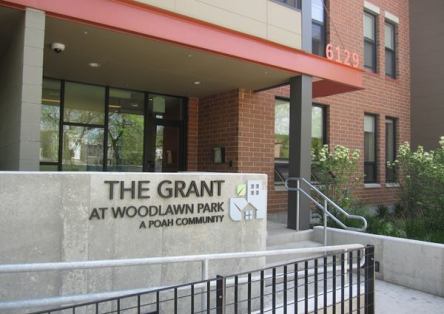Cluj-Napoca, the second most populous city in Romania, and the home of Yardi Romania, is an emerging new real estate and technology market, boasting a quirky mix of old and new. Founded in 1213, Cluj-Napoca is a city brimming with history, with its eyes set on the future. An excellent example of the city’s evolution is Riviera Luxury Residence, a 91-unit luxury condominium project that will be one of a handful of green developments in Transylvania. Currently under development in the city’s hottest residential submarket, the Mărăşti and Gheorgheni neighborhoods, the project (pictured, right) has received Class A energy certification and is seeking a BREEAM Excellent certification as well. The $13.6 million (€10 million) development encompasses a bevy of sustainable features such as the use of energy efficient materials, solar panels, recycling and immediate proximity to mass transit. These will result in annual heating costs below $340 for a three-bedroom, 860-square-foot unit. “Five years into the economic recovery, the real estate market in Cluj-Napoca has finally started to improve. The first quarter of 2014 has seen important growth in all sectors of the industry,” says Anamaria Burca, managing partner at Coldwell banker Transylvania, the Coldwell Banker brokerage office in Cluj, which holds the exclusive marketing rights to Riviera. “As one of the strongest markets in Romania, second only to Bucharest, Cluj-Napoca attracts increasing numbers of investors who seek to capitalize on the strong demand for market-rate housing–both condos and rental apartments,” Burca added. Developed by local developer I&C Transilvania Constructii with Hungary-based general contractors Kész Építő és Szerelő Zrt., local architecture firm ARHIMAR and project manager CS Invest Consulting, the project is expected to complete in September 2014.It will comprise two-, three- and four-bedroom units ranging between 484 and 1,776 square feet, featuring expansive balconies or private gardens offering panoramic views of the city. Community amenities include a 5,262-square-foot spa featuring a fitness center and indoor swimming pool, professionally landscaped green spaces, children’s playground, 24-hour manned security, key-card and intercom access and onsite caretaker. Riviera Residence is located 300 feet away from a recently overhauled public park and lake and from one of the biggest commercial centers of the city, Iulius Mall, which houses a grocery hypermarket, a 12-screen theater, a medical clinic, a multitude of local, national and international retailers and a multi-story office component. A second, fully-leased phase of the office component, dubbed Iulius 2, is on the fast-track towards completion about 150 feet away from Riviera Residence. The office high-rise will house the consolidated local offices of Genpact and Office Depot. Riviera Luxury Residence will also mark the launch of a new product in the local real estate market: the guaranteed rental price. The product entails that condo units bought by investors and furnished according to Coldwell’s standards will be leased to renters by Coldwell at a guaranteed price. Both renters and condo buyers are expected to be plentiful. “The multifamily market is trying to accommodate an influx of new residents to the area, and construction activity is picking up as well, with a large number of apartment units currently underway,” Burca said, adding that the Cluj market is in an interesting position. “The Great Recession hit locally with a delayed effect. The effect began in 2009, but there were still several residential projects that were completed that year. By the end of 2010 and into 2011, however, the market had come to a complete standstill. Nothing sold, not units completed in private developments, not condos put on the market by owners. Had it not been for the First Home Program (a government-assisted housing initiative that aids young couples in purchasing their first residence), the market would have gone completely under. First Home kept us on life support.” Things have been looking up recently, however. “The local housing market has increased by almost 20 percent over the past 12 months. As the multifamily market tries to accommodate an influx...
Affordable Honors
For Yardi clients
Affordable Housing Finance’s readers chose their favorite projects from 34 finalists in nine categories based on innovation, community impact and creative problem solving, among other criteria. Seven of the nine projects are from Yardi clients with diverse development specialties in green design, urban planning, senior housing, and mixed-use projects. Preservation of Affordable Housing (POAH) was awarded the title of overall winner for its work on Grant at Woodlawn Park in Chicago (pictured, right). The 33-units serve low- and moderate-income families and are part of POAH’s Woodlawn neighborhood revitalization initiative. In addition to being voted the overall winner, Grant at Woodlawn Park was also selected as best master-planned/mixed-use project. The Boston-based nonprofit also is providing job placement services, financial counseling, and youth programs. Mercy Housing is a national nonprofit organization that renovates existing housing and develops new affordable rental properties for low-income families, seniors and people with special needs. Mercy Housing also builds strong foundations for its residents by providing programs such as health classes, financial literacy, employment resources, parenting and after-school programs for children. Mercy Housing took awards in the categories for family, senior and preservation projects. Mercy Housing California developed Caroline Severance Manor, located in the Mid-Wilshire/Koreatown neighborhood in the City of Los Angeles. The five-parcel property contains 85 units of intergenerational affordable housing with one-, two-, three- and four-bedroom apartment homes. In Chicago’s Pullman community, Mercy Housing Lakefront preserved a historic factory and transformed it into 210 affordable units known as Pullman Wheelworks. And in Half Moon Bay, Mercy Housing California helped bring seniors closer to critical services with the development of Coastside Senior Housing. Below its 40 affordable units, the property’s ground floor houses an adult day health center and a senior center with meal program. Satellite Affordable Housing Associates (SAHA)...
7 Security Tips
Sept. is Safety Month
September is REALTOR Safety Month, an excellent opportunity to spread awareness about security and safety issues facing our industry. The list below highlights seven safety tips that can keep you safe while working and networking online. Review your company’s internet policy and stick with it. We understand that policies are absolutely positively boring but they are in place for very good reasons. Rules for downloading apps and software can be particularly important as they prevent viruses and hackers from gaining easy access to your machine—and all of the sensitive data that can be accessed from it. Not even your mother deserves your passwords. It’s easy to let a co-worker or family member “borrow” your password for a quick login but resist the urge. You’re accountable for anything that happens when you’re signed in. Also, avoid using the same credentials for your personal and professional accounts. Your password should be as complicated as tax law. Each account should have a unique password with a mixture of characters (capitals, symbols, numbers). While they may be easier to remember, avoid using names and dates, which many people could figure out just by browsing your Facebook profile. Make security software updates automatic. You’ve got enough to remember as it is. Keep your machine, client data and personal data safe by maintaining updated security software at all times. Think twice about clicking links, even from coworkers. If you receive an email or chat from a coworker that seems suspicious—words and punctuation that they don’t use, topics they’d never broach—it’s probably a scam. Delete or quarantine the message immediately. If you’re uncertain, check with your peer through an alternate method to confirm that he or she is the sender. Invest in identity protection. In our increasingly digital age, so much...
Commercial Green
Certification Benefits
The recent recession may have been the best thing to happen to sustainable commercial building. During those years, sustainable buildings proved their value: sustainable properties experienced lower vacancy rates; builders with green experience fared better than their counterparts; and businesses began to acknowledge green building and renovation for its cost-saving benefits. The environmental benefits were often received as an afterthought. “During the recession, tenants and landlords tried to save on up-front construction costs, but they realized that by putting sustainable strategies in place, they could really save money in the long run,” says Bill Abballe, Program Manager at SouthFace. It’s not just green buildings that can cut costs in the commercial sector. The Green Edge report issued by the National Resources Defense Council offers up-to-date, detailed data on the benefits of green infrastructure for commercial developers. Research by Building Owners and Managers Association International (BOMA) asserts that, “implementing sustainable building practices is not a fad, but a proven strategy for reducing costs, enhancing asset value, improving tenant satisfaction and increasing net operating income.” Studies by the Green Building Alliance summarize what a variety of sources have confirmed. Properties and communities with green building certifications achieve: Higher rental or resale value Higher occupant satisfaction Higher demand Lower operating costs Yet even the greenest commercial building will fall short of its potential without proper certification. Third party certification programs provide validity to green building claims in a way that can attract capital and tenants with ease. Commercial developers may now choose between a number of sustainable certification programs that offer various levels of prestige: Building Research Establishment’s Environmental Assessment Method (BREEAM) was the first comprehensive green building rating system and is currently the leading international design and assessment method for sustainable buildings. BREEM thoroughly analyzes multiple factors throughout the project’s lifecycle to determine its sustainability ratings. Leadership in Energy and Environmental Design (LEED) is a sustainable building certification program that recognizes best-in-class building strategies and practices. It gained popularity in the United States and now has the largest globally accepted certification program. But perhaps the most prestigious certifications come from Living Building Challenge (LBC), which honors built projects that mimic the natural environment’s efficiency and balance. Net Zero operations in water, waste, and energy are the mere foundation to other rigorous standards. To date, there are only eight LBC buildings on earth. Green Globes has gained popularity in North America as an affordable alternative to the aforementioned programs. This environmental design and management tool offers online assessment and guidance for design, operation, and management. Quick feedback and interactive components makes this certification program a rising star. There are also several regional and state programs, such as EarthCraft Light Commercial, which specializes in green building certifications for structures in the southeastern United States. The small scale of its realm works to the organization’s advantage. EarthCraft is able to perform in-person evaluations to assure compliance. While certifications may verify a commercial property’s sustainability at the time of construction or renovation, it takes the right software to monitor long-term efficiency and ROI. Automating daily meter readings, data analysis, costs and consumption can be beneficial. Owners and operators can quickly address any issues that may arise to assure optimal operations. To stay ahead of the curve, companies must develop portfolios with proven sustainable features. The demand for certified, sustainable commercial building is estimated to increase. Cushman and Wakefield surveyed 25 premiere real estate property owners and managers in North America. 60% of respondents believed that investor interest in sustainable performance is increasing. 68% of respondents currently include sustainability in their investment evaluations. Businesses aim to create the best environment for their talent, driving end-user demand for holistic sustainability. From investors to tenants, sustainable building has taken center stage as the future of commercial real...
UK Think Tanks
Emerging Market Insight
Yardi will host a series of think-tanks that unite industry professionals in discussion on the hottest issues facing real estate in the UK. This week: what are the prospects for property as an asset class? A new plan may draw investors from the capital to previously overlooked northern towns. During the global recession, emerging markets remained steady as developed markets faltered. Since the recovery, the major markets–US, Europe and Japan—have recaptured the attention of investors. But will London’s assets continue to lead England or are regional markets promising prospects? It could behoove investors to look beyond London’s city limits for growth opportunities. The capital’s highly competitive real estate market offers few new opportunities; the bulk of existing investors are vying for coveted space in the city’s 70-80 successful high street locations. It would be a shame for investors that do not make it into those locations to take their resources outside of the country. The solution: transform London’s regional markets into more attractive prospects. The Local Growth Fund has allocated £12bn to merge Leeds, Sheffield, Manchester, and Liverpool into the “northern powerhouse.” Supporters do not plan to siphon London’s businesses or big investors. Instead, the emphasis will be placed on nourishing successful local businesses and attracting new resources. Hopes ride on the dawn of new investors, those beat out of opportunities in London, for example, and those who are new to the arena, such as Chinese investors who have received more flexible access to foreign markets in recent years. As a rising business center, the northern powerhouse properties can be developed to fit modern tenants’ demands: Occupiers of the new business center will be greeted with competitive rents, convenient mixed-use facilities with eco-friendly features, and pedestrian friendly access. The northern powerhouse can be quite appealing in...
Purchasing Power
Home Depot + Procure to Pay
Yardi® clients can now easily access thousands of The Home Depot® products either in store or online with a click of a button via the online procurement system offered with Yardi Procure to Pay™, a fully automated end-to-end procurement and invoice processing platform. The Home Depot has set the standard for innovative merchandise for both the do-it-yourselfer and the professional contractor and its global customer base also encompasses commercial and multifamily property owners and managers. The Yardi Procure to Pay system enables The Home Depot purchase orders and invoices to flow through an automated, customized online approval workflow, giving property owners and managers insight into all purchases and ensuring complete purchasing compliance. For clients currently using Yardi PAYscan™, access to The Home Depot catalog is available at no additional cost and no implementation is required. In addition to online purchasing, registered clients can also walk into any of The Home Depot’s nearly 2,000 locations in the U.S. to make in-store purchases. Those purchases automatically update online purchase orders and are invoiced through Yardi Procure to Pay. “We are thrilled about our new business relationship with Yardi. Property managers now have a compliant ordering solution with the option of selecting same-day, in-store pickup or even delivery from The Home Depot,” said J.T. Rieves, vice president of The Home Depot Pro Business. “The Home Depot will leverage its thousands of U.S. locations, vast distribution network and outside sales team to become a strategic supplier of maintenance, repair and operating supplies and building materials for our very important property management customers.” “The Home Depot’s impressive catalog of products and resources is a major addition to our national network of partners, and further expands Yardi Procure to Pay to be a true one-stop solution for MRO supplies with...
Alan Missen
FirstService Residential
FirstService Residential is the largest third-party manager of homeowner’s associations in the United States, with more than 6,000 properties – and another 600 or so in Canada. So it makes sense that the Dania Beach, Florida-based company would be think big about how to deliver technology solutions specifically for the HOA lifestyle. Whether you’re a resident or owner of a home in a master planned community, a community manager of an HOA or a member of a community board of directors, FirstService is thinking about how to improve your experience, and give you mobile applications to obtain information and complete neighborhood-related tasks. “Whatever we can do to make the community manager’s life easier, and do that in an effective way, translates into a better experience for the resident,” said Alan Missen, recently appointed CIO for FirstService. “That’s such a big part of our culture, making a difference in every resident’s life every day.” Missen talked about the various apps FirstService is developing and how they hope to make the HOA experience more mobile-friendly for everyone involved. Tell us about your existing resident service portal. Missen: FSRConnect is our core property management solution. It’s focused on helping the associates to service the property and has a lot of information around the residents, the properties, and it aids in managing much of the activity around amenities. In the HOA world, there’s lots of documents that need to be put in the hands of residents, so we handle document management with this solution. We manage work orders, violations, architectural modifications, and we also provide some financial data that residents can touch. We’re generally more cautious around that, the financial data being more sensitive, so we keep a lot of that back in our accounting solutions. But we...
Investment Drivers
Commercial real estate
The real estate landscape is in constant evolution, with developers always on the lookout for smart investment opportunities. Whereas the direction of new development efforts is dictated by a combination of factors, including market conditions, economic considerations and demographic trends, quality infrastructure systems act as a platform supporting real estate growth across the globe. According to a recent report issued by the Urban Land Institute in collaboration with EY, solid infrastructure – including transportation, utilities, and telecommunications – makes the commercial real estate sector tick, along with consumer demand and workforce skills. Infrastructure 2014: Shaping the Competitive City aims to shed light on the role of infrastructure in the development of healthy communities. The eighth in a series of reports examining infrastructure trends and issues, the ULI/EY analysis was released at ULI’s 2014 Spring Meeting in Vancouver, British Columbia. Conducted in January 2014, the survey mirrors the opinions of 241 public sector officials and 202 senior-level real estate executives (developers, investors, lenders and advisers) in large and mid-sized cities all over the world, with concentrations in the United States, Europe and Asia Pacific. About 86 percent of survey respondents were based in the United States. According to the report, the majority of public leaders (91 percent) regard infrastructure quality as the top influencer of real estate investment and development decisions. Infrastructure was rated as second to highest by private leaders (86 percent). Meanwhile, the private sector (90 percent) viewed consumer demand as the top feature determining investment locations. Government service – regulations, tax structure, and quality – fell in the midst of influencing factors for both public and private respondents. “This survey indicates a growing awareness among the public and private sector of the importance of investments in a variety of transportation systems, including...
Digie Awards
Honor for Voyager 7S
Realcomm recently announced the winners of the 2014 Commercial Real Estate Digital Innovation Awards (AKA the “Digies”), including an award for Best Real Estate Technology Innovation, which was won by Yardi Voyager 7S. The latest and most advanced version of Voyager, Yardi’s flagship property management and accounting software, is used by thousands of clients to manage millions of apartments, commercial rentals and other property around the world, was lauded for: Comprehensive ERP incorporating both front and back office Extensive cloud-based architecture Incorporates comprehensive suite of mobile applications Yardi Voyager 7S works with all Internet browsers and is tablet compatible. In the following video, Rob Teel, Senior Vice President, Global Solutions, talks about integrating the front and back office with the power of Voyager 7S. Teel, who accepted the award for Yardi at Realcomm’s recent conference, commented: “We are thrilled to be recognized by Realcomm for our innovation with Voyager 7S. We live in a mobile world, and it was really important to our clients that our flagship Voyager product line be available on the go through tablets and multiple Web browsers. We would also like to congratulate the 1,000+ clients that have already upgraded to Voyager 7S.” In addition to Yardi’s Digie Award, a number of clients were also recognized at Realcomm and IBCon for exemplary accomplishments involving use of technology, automation and innovation. They included: Best Use of Automation – Commercial Services CBRE – Los Angeles Office Development of leading-edge open space design concept Digitization of all documents to enable mobile environment Collaborated with Google to create Liquid Galaxy experience Best Use of Automation – Property Management Arcadia Management Group Highly automated tenant maintenance, mobile inspections and procure to pay Consistent willingness to take risks with new technologies Commitment to educate and share knowledge and experience with the industry Most Intelligent Building Projects – Office Portfolio Detroit Portfolio – Bedrock Developed a comprehensive portfolio-wide smart building strategy Integrated an extraordinary number of disparate systems Willingness to share successes and failures with the industry Best Use of Automation – Real Estate Investment Management Deutsche Bank Wealth & Asset Management Created a comprehensive integrated platform for investment management Demonstrates strong project management and execution of large-scale technology implementations Continual improvement and automation of complex business processes Best Use of Automation – Retail KIMCO Realty Development of advanced leasing, budgeting/forecasting and business intelligence applications Continual willingness to interact with peers and take leadership role Implemented advanced web-enabled lighting solution Most Intelligent Building Projects – Office Building Pennzoil Place – Transwestern Developed complete and comprehensive vision for a smart building Design concept blended a balanced integration of both IT and BAS Created a revenue stream by selling broadband back to tenants Most Intelligent Building Projects – Retail Taubman Implementation of broadband network throughout retail mall portfolio Continually striving to find new and innovative ways to enhance the customer experience Created new revenue stream by providing broadband services to tenants Realcomm has been awarding Digie honors since 1999. Yardi has earned many of the awards, including one in 2013 – also for Digital Technology Innovation – for Yardi Leasing Pad, the mobile leasing application. For a full list of the 2014 award winners, see: http://realcomm.com/advisory/advisory.asp?AdvisoryID=643 Congratulations to all of the...
Multi-Generational Living...
Demand for Next Gen homes is up
The trendlines continue to point to a steady, albeit slow, recovery of the housing industry. Builder confidence in the market for newly-built single-family homes hit a significant milestone in June, surging eight points to a reading of 52 on the National Association of Home Builders/Wells Fargo Housing Market Index (HMI). According to NAHB, any reading over 50 indicates that more builders view sales conditions as good than poor. “This is the first time the HMI has been above 50 since April 2006, and surpassing this important benchmark reflects the fact that builders are seeing better market conditions as demand for new homes increases,” said NAHB Chairman Rick Judson, a home builder and developer from Charlotte, N.C. “With the low inventory of existing homes, an increasing number of buyers are gravitating toward new homes.” On a more personal level, the fluctuating economic market has resulted in a shift in consumer perspectives. The larger population seems be aware of the financial commitments attached to home-ownership and realigns priorities in order to achieve the much longed-for independence. In recent years we have witnessed the emergence of trends like shared housing and rent-to-own homes that aim to somewhat appease the effects of the recession. Balancing entry-level pay with high cost of living and substantial debt is a major challenge which not many young adults are willing to take. Rather than struggling to make ends meet, college grads or adult children choose to move back with their parents, which can be a wise decision in the current context. Acting as a financial lifeline, this interim is an excellent opportunity for boomerang kids – as social scientists call them – to build a savings account, find stable jobs and start a family. This change in consumer attitudes has also led...
Awarded for Ethics
CBRE Group lauded
Pushing ethics to the top of its priority list has paid off for CBRE Group Inc., which has a long history of strong reputation management practices. Recently named one of the world’s most ethical companies by an independent assessor, the Ethisphere Institute, the global commercial real estate firm takes corporate values, which have a direct impact on business practices, exceptionally seriously. Those values inform processes, procedures and prioritization of compliance, risk management, communications and client security. At the heart of the effort is the CBRE RISE program, standing for “Respect, Integrity, Service, Excellence.” The company’s 44,000 global employees receive quarterly training sessions in ethics and compliance, delivered either online or in person. A compliance officer exists for each country where the company does business—55 in all. “If you hold up your individual corporate values, that will empower your people to feel confident and make the right decisions in difficult circumstances,” said Tyson Avery, chief ethics and compliance officer for CBRE, a Yardi client. “There’s no cookie-cutter commercial real estate transaction, and the same is true with the risks that we face. All scenarios are a little different.” Avery identifies cloud security, corruption, conflicts of interest and data privacy as all being areas of relatively high risk for global companies. Hence the prioritization by CBRE of best practices, which is enhanced not only by the frequent training sessions but maintenance of a hotline/helpline where employees can anonymously report any concerns. Ethisphere’s “World’s Most Ethical Companies” are recognized for their policies and actions, including ethical business standards and practices, exceeding legal compliance minimums and being industry leaders. For 2014, Jones Lang LaSalle Inc. and Reology Holdings Corp. were also recognized in the real estate sector. Marriott International was among the honorees in Leisure and...
Keeping Up with E-Commerce
Impact on Retail Real Estate
As online sales continue to rise, the signs of the Internet’s impact on retail real estate are hard to According to projections by Forrester Research, cross-channel retail sales—including those influenced by online information but completed in stores—will hit $1.8 trillion by 2017, up from $1.2 trillion in 2012. Projections of new-store openings hold more subtle clues. Cassidy Turley estimates that restaurants will account for 43 percent of the 38,000 new-store openings expected this year. Until 2011, new-restaurant openings averaged only about 35 percent of the total. The result hints that online sales are contributing to a broad slowdown in non-restaurant retail expansion, according to Garrick Brown, director of research for Terranomics, Cassidy Turley’s retail affiliate. For retail real estate management, the implications of e-commerce are both far-reaching and complex. The much-noted preference for smaller footprints is a fact of life for many electronics retailers, department stores and other categories, which can treat their stores as showrooms, notes David Birnbrey, chairman & co-CEO of the Shopping Center Group. The influence of online shopping on this shift is impossible to miss. As a rule of thumb, Birnbrey says, the most likely products to be sold via e-commerce are those people don’t mind waiting for. For instance, according to the most recent estimates by the Census Bureau, computers and consumer electronics account for 22 percent of all Internet sales. Apparel, the runner-up, makes up 18 percent—the only other category to reach more than 10 percent of total online sales. Yet rising online sales do not negate the value of a strong brick-and-mortar presence for apparel retailers. Ordering a DVD online is one thing, but customers like to see clothing and try it on before taking out their wallets. In this fast-changing environment, retailers are expanding the complementary use of different retail channels. Fulfillment is one activity demonstrating robust growth, with bigger retailers increasingly fulfilling e-commerce orders from their stores, observes Bryan Jensen, vice president & principal of supply-chain strategy and logistics consulting firm St. Onge Co. By the end of last year, Best Buy Co. was offering its ship-from-store service at more than 400 locations. Macy’s, too, is expanding its omni-channel services, with plans to make fulfillment available at 500 stores. And in November, Gap Inc. expanded its “Reserve in Store” service to more than 200 Gap stores in 15 markets as well as its entire Banana Republic portfolio. Customers are invited to order as many as five items, which are held at the store for pickup until the next business day. On the flip side, some retailers are downsizing their stores, partly vacating a large-scale footprint. That presents a series of challenges for the owner and its leasing agent, since they have to ensure enough frontage for the retailer that replaces them, according to Jeff Green, a veteran retail real estate consultant based in Phoenix. But space that needs backfilling also gives the management team a chance to refresh a center—for instance, replacing an office products store with a strong anchor like Whole Foods. More complex are some new strategies emerging from a combination of growth in e-commerce and continued economic recovery. Macy’s, for instance, drew headlines in January when it announced intentions to shutter stores in a number of states—including Arizona, Kansas, Maryland, New York and Utah—and trim about 2,500 jobs. Its focus on its online sales was widely cited as a factor, but amid the buzz about the closings, the company’s plans for new stores may have been overlooked. By fall 2016, the department store chain expects to open stores Macy’s-brand stores ranging from 150,000 to 195,000 square feet in the Bronx, N.Y., Las Vegas, Miami, Ponce, Puerto Rico, and Sarasota, Fla. During that stretch, Macy’s will also roll out new Bloomingdale’s stores in Honolulu, Miami and Palo Alto, Calif. Of note, the 120,000-square-foot store at Stanford Shopping Center in Palo Alto will replace an aging predecessor that, at...
SB Real Estate
Powered by Point2
Santa Barbara’s Multiple Listing Service is among the latest to switch to a website provided by Yardi-owned Point2. The Santa Barbara Association of REALTORS® (SBAOR) introduced SBAOR.com earlier this week. The new website uses data from the Santa Barbara Multiple Listing Service (MLS) to display searchable property listings on a mobile-friendly platform. SBAOR.com was developed by Point2, an industry leader in online marketing and data management for real estate. Website visitors can browse Santa Barbara homes for sale and rent, see property details by address and contact local real estate agents. Search options allow users to view active MLS listings by neighborhood, ZIP code and custom-drawn polygon, as well as criteria such as price range, property type, number of bedrooms and upcoming open houses. Registered users gain access to near real-time updates, new listings, detailed property reports and additional functionalities. Registration is free. “The Santa Barbara Association of REALTORS® has enjoyed partnering with Point2 to create a valuable real estate resource for our community that’s also an asset to our members,” commented Ed Fuller, president of SBAOR and broker-owner of San Roque Realty Inc. “SBAOR.com is the most accurate, mobile-friendly and consumer-friendly website for comprehensive Santa Barbara real estate information.” Using best-in-class consumer interface and mapping technology supplied by Point2, SBAOR.com benefits association members by generating increased exposure for member listings and services. Listing agent contact information is prominently featured next to each property. A “Find a REALTOR®” tool at the top of each page helps buyers and sellers to get in touch with SBAOR brokers and agents. “Point2’s MLS and Association Consumer Portal solution connects buyers and sellers to our members without lead diversion,” continued Fuller. “Whether you’re looking to buy a home, sell a property or speak with a REALTOR®, SBAOR.com is...
Point2 Powers Portals
Web solutions for MLS' and associations
Two regional REALTORS® associations in different parts of the country announced this week that they are now running their real estate websites with the use of Point2 MLS and Association Consumer Portal, which provides consumers and real estate professionals with the most current real estate data for their area. The MLS and Association Consumer Portal for the Reelfoot Regional Association of REALTORS® (RRAR) is live. The new website, RRAR.org, provides consumers and real estate professionals with the most reliable real estate data for northwestern Tennessee and southwestern Kentucky. The Point2 MLS and Association Consumer Portal uses data directly from the RRAR Multiple Listing Service (MLS ) to display searchable real estate listings in Tennessee’s Lake, Obion and Weakly counties, including homes for sale, commercial properties and farmland. The portal is designed to maximize the online exposure of RRAR members’ listings, while allowing the association to control and maintain the value of their listing data. Another prominent feature of RRAR.org is its “Find a REALTOR®” tool that connects home buyers and sellers with local real estate agents. “This was a straightforward decision for us,” commented Jennifer Hooks, association executive at RRAR. “Point2 has been providing listing syndication for RRAR for the last two years. We knew Point2, with its reputation as an industry leader in real estate technology and online marketing, would be the perfect fit to provide consistent and accurate data from our MLS. Whether the consumer is selling property or just beginning their search, buyers and sellers in northwest Tennessee and west Kentucky now have an additional resource from their REALTOR® for each step in every real estate transaction.” RRAR celebrates its 50-year anniversary as a real estate trade association this year and is pleased to be able to continue their history of innovation by creating this real estate portal to better serve their members and the community. “MLS public portals are becoming an in-demand, value-added service of MLSs and associations across the country,” said Point2 Industry Principal Saul Klein. “Point2 is excited to bring this service to the members of the Reelfoot Regional Association of REALTORS® and the public. The aggregation of the most up-to-date real estate data originates with the MLS.” The Great Smoky Mountains Association of REALTORS® (GSMAR) also announced that its new website, GSMAR.com, is now live. The real estate search portal is powered by Point2 to provide consumers with information about local properties for sale using timely and accurate data that originates from the GSMAR Multiple Listings Service (MLS). Consumers can search for Smoky Mountain homes, land, commercial properties and REALTORS® on the area’s largest local real estate website. GSMAR’s website has been branded and customized to suit the needs of the organization. “We at Great Smoky Mountains Association of REALTORS® are very pleased with our consumer portal, and it’s been a pleasure working with the Point2 team to get our site launched,” commented GSMAR MLS Specialist Kirk Chandler about the experience. Visitors can also find recommended affiliate services on the site, adding a wealth of consumer-oriented resources to GSMAR’s real estate portal. Appraisers, contractors and title agencies are among the many real estate-related contacts included for easy reference by home buyers and sellers, as well as agents. “Associations and MLSs across the country are beginning to see the value of consumer listing portals as another way to serve their members and the public,” said Point2 Industry Principal Saul Klein. “We have enjoyed working with the forward-thinking leadership team at Great Smoky Mountains Association of REALTORS® who are taking innovative steps in the ever-changing world of online real estate marketing.” Since 1967, Great Smoky Mountains Association of REALTORS® has been the Voice for Real Estate in the premier resort area of the Great Smoky Mountains and east Tennessee. Founded in 1996, Point2 provides online marketing solutions for real estate agents worldwide and real estate organizations in North America. Point2 also owns and operates...
Affordability Crisis
Hurting for housing
Every morning at 8am, the construction crews begin working on the neighborhood behind my home in an Atlanta suburb. The sounds of hammers, trucks, and lively music are a sign that the housing market is recovering. While these lots will make lovely homes for some, their $250,000+ price tags exclude buyers most in need of housing relief. The nationwide shortage of affordable housing is getting worse. There’s no housing shortage. Skylines receive new jewels every quarter as developers jump on the luxury high-rise trend. Even single-family builders are stretching their legs with post-recession vigor. Big spenders have an increasing number of options. Middle- and low-income families, however, are the ones scrambling to find shelter while making ends meet. There are two notable causes for the affordable housing shortage: the widening chasm between incomes and rents, and investors’ lack of interest in affordable housing. The gap between incomes and rents grows wider. Research conducted by the Joint Center for Housing Studies (JCHS) shows median incomes plummet by 13 percent between 2000 -2012. While incomes decreased, the population of extremely low-income renters doubled in less than a decade. Of renters making less than $15,000 per year, 24 percent reported hardships with lease payments. Rent—not transportation, electronics, or clothing—is continually absorbing a larger amount of American’s income. The lowest-income renters are scaling back on food, sacrificing about $100 each month to pay for housing. The JCHS study revealed that half of today’s renters spend more than 30 percent of their income on housing; one in four families spend more than 50 percent. A study by National Low Income Housing Coalition (NLIHC) places that percentage closer to 75 percent. Incomes shrink while rent rates are continuing to increase. From 2000-2012, median rents skyrocketed by 6 percent. Rising costs can’t dissuade renters. There aren’t many other options. The influx of post-recession renters to the market drives fierce competition, turning even the priciest, tiniest rentals into a battleground. In these cost wars, low-income renters have been left out of the negotiations. There simply aren’t enough affordable units to go around. NLIHC estimates that there are 10.1 million extremely low-income households and only 5.6 million housing units to accommodate them. Almost half of these household contain children and are at high-risk for homelessness if more housing is not created. But affordable housing has not been on the top of many agendas. In 2008, President George W. Bush initiated The National Housing Trust Fund. The fund would create, maintain, and renovate affordable rental housing communities. Though he gained support from both sides of the aisle, the trust never received funds. Affordable housing faces local setbacks as well. Some local governments and community groups refuse to approve affordable housing in their areas. Their concerns are rooted in antiquated views and stigmas surrounding affordable housing. Home Matters was created in 2013 to educate local powers about the new and improved face of affordable housing: eco-friendly, stylish neighborhoods that are rich with engaging community programs and increasingly self-sufficient tenants. Nearly 200 local and national organizations have joined forces under Home Matters. They hope to change public opinion about affordable housing and in turn increase support and funding for these vital...
Market Report
Insight from Pierce-Eislen
The following article is excerpted from an article by Keith Loria in the January issue of Multi-Housing News. Find the the full story at Market Report: Ones to Watch. Pierce-Eislen is a subsidiary of Yardi Systems. Ron Brock, vice president and general manager of Pierce-Eislen, located in Scottsdale, Ariz., says that his Top 10 list of markets to watch in the upcoming year is projected to have a combined 6 percent rent growth in the next 12 months. He also believes his list is going to surprise some people, because some markets that were doing well this year are not going do very well next year. “If you look at the Bay area of Northern California, it’s all very good. You have the East Bay market, the San Francisco Peninsula and the South Bay/Silicon Valley market,” he says. “There are good jobs there. Like everything else, a composition of jobs brings some good income.” Austin, Texas is also on his list, and while Brock admits that it does seem to be overbuilding right now, the jobs being created are very attractive and pay handsomely, boding well for its future. “Other markets to say “yes” to in 2014 are West Palm Beach, Boca Raton, suburban Atlanta, which is a surprise, Miami, Denver, Orange County and the Southwest Florida Coast,” Brock says. “West Palm Beach is interesting because job growth isn’t so much a factor, but it’s the empty nester crowd. Retirees go there and are willing to pay. Same thing with the Southwest Florida Coast—people are showing up with money.” The Miami office space market meanwhile is being driven by money from outside the country, most notably South America. Suburban Atlanta is seeing an increase in job creation, which is the complete opposite of what’s...
Tops in Technology
Award nominations open
Commercial Property Executive is looking for nominations for its second annual Tops in Technology Awards. The ballot will recognize the leading technology product and service providers assisting the commercial real estate industry, with winners in a variety of categories. The number of categories will depend on the nomination process, though, so be sure to enter your favorite technology providers for consideration! The deadline for nominations is Feb. 19. Then be sure to return to vote on the ballot! As Published Dan Waldman wrote in the announcement of the inaugural awards: “These companies stand out for their ability to provide flexible customization, competitive pricing and the most innovative solutions, all backed by superior customer support. In this fast-paced, competitive business, your technology choices are critical to efficient operations, ensuring satisfied tenants, successful projects and completed transactions. Whether it be marketing your properties with an attractive and informational Web site, streamlining a lease signing or creating convenience by automating billing and payment systems, technology continues to make life easier and less costly for everyone involved. As technologies for our industry proliferate and evolve to meet our constantly changing needs, the playing field continues to attract more contestants. The companies here are the ones that have been rated highest by our readers, so please keep this list as your reference.” Find the 2013 Tops in Technology winners on page 21 of the April 2013 edition of...
Honoring Achievement
CPE Awards Nominations Open
Commercial Property Executive is now accepting submissions for the 2014 Distinguished Achievement Awards. The awards program, now in its fourth year, recognizes the commercial real estate industry’s most noteworthy properties and transactions. The winners will be selected by a panel of judges representing expertise across commercial real estate disciplines. Finalists will be announced in June on CPExecutive.com, and winners will be published in the July issue of Commercial Property Executive. (Read about last year’s winners, profiled in the July 2013 issue.) The entry deadline is March 29, 2014. To view the submission entry forms, select from the categories below: Best Lease Best Sale: Single Property Best Sale: Portfolio Best Financing Best Development/Redevelopment Most Effective Repositioning/Turnaround Plan Most Effective Property Management Program Most Innovative Corporate Strategy To submit payment and/or materials online log on to CPE‘s submission manager...
Bitcoin
The future or a failure?
Now in its sixth year of existence, bitcoin is rising in popularity, value, and accessibility. The question remains, however, if the digital currency can realistically open new doors for international commerce. Bitcoin is a digital currency that hit the marketplace back in 2008. Like other currencies, its algorithm-based exchange rate fluctuates daily. The currency is not backed by a central bank or government; as such, it cannot be stored in a bank. Tightly encrypted online accounts facilitate transactions. The currency has earned a mixed reputation. Some hail bitcoin as the next step in digital exchange, the future of global commerce. Bitcoin transactions result in fewer fees and capital controls, thus promoting more fluid trade. Others view bitcoin as the currency of thieves, vagabonds and unsavory black market merchants. Some governments won’t even humor bitcoin exchanges with their presence; the Chinese government forced the nation’s largest bitcoin exchange to stop accepting yuan deposits late last year. China’s actions somewhat crush the notion that bitcoin could survive as an independent currency. If other governments follow China’s example, their currencies could no longer be used to fuel bitcoin exchanges. Ultimately, bitcoin would be reduced to figures on a screen with no real world value, the equivalent of gaining or losing points on Candy Crush. But so far that hasn’t happened. While the value of bitcoin slumped miserably after China’s rejection, the currency is rebuilding strength in other markets. In fact, it may be used in American real estate transactions. Bond New York, a Manhattan-based real estate broker, is now accepting bitcoin as payment for real estate. In December, The Wall Street Journal reported that two sellers—one for an $800,000 ranch in the Hamptons and the other for a $7.85 million mansion in Las Vegas—are willing to accept...
Big Data
Predictive Marketing + Real Estate
If you knew how visitors interact with your website, what their ages and interests are, could you serve them better? Could you use information about your clients and potential clients to create more effective marketing? That’s what the National Association of REALTORS® (NAR) aims to find out. At the 2013 NAR Convention and Expo in San Francisco last month, chair Danny Frank hosted a talk about data collection titled Big Data and You: Predictive Marketing, Predictive Analytics and Data Visualization. Big data is essentially the aggregation of separate but potentially related information sets that can then be interpreted in a practical way. For example, a website can collect data about the actions of its visitors and then use that data to predict and surface what the user will want to see or do or buy next. This is called predictive marketing. If you have ever noticed “You might also like” messaging on a site like Amazon or Netflix, then you have seen an example of a business using the data it collects to tailor its services to you. In theory, big data can be used to develop predictive analytics that will improve user experience – both in the real world and online – and, as a result, increase profits. The retail applications of predictive marketing are apparent, but what are the applications for the real estate industry? Several ideas were posited at the NAR talk mentioned above. Todd Carpenter, managing director for NAR’s recently created data analytics group, explained that analytics are like listening and “the more you listen to your client, the more you can serve their needs.” To that end, one of the group’s aims is to figure out how to use the mountains of data that NAR already has at its...
Facebook for Business...
Reaching prospects online
Your friends are on Facebook. Your boss is on Facebook. Even your mom is on Facebook. In fact, this popular online network reached over 1 billion users in May – making it the largest social platform around. So are your clients on Facebook? You bet they are. If you’re ready to reach a larger audience and close more sales, you just have to remember the three most important rules of real estate: location, location, location. Where you do business matters as much, if not more, than how you do business. In today’s online marketplace, Facebook is a prime location to attract and interact with consumers. With that in mind, here are 6 tips that will help you optimize your Facebook business page to attract more prospects, whether you’re a real estate agent, a property manager or a leasing agent. 1. Complete Your Profile First things first, complete your profile so that page visitors know who you are, what you do and how to contact you. Include your phone number, your email address and a link to your website. Add a description of your business that includes industry-relevant keywords. And be sure to choose attractive and professional images for your cover and profile photos. (For example, if you sell houses for a living, using a family photo as your cover image might not be the best choice.) 2. Promote Your Page Share a link to your Facebook page on your website, but don’t stop there! You should also include the link in your email signature and post about your business page on other social media channels. 3. Empower Your Fans Once you get people to your page, how do you keep them there? Think of your business page as the social version of your website....
Taking Back Data Control...
Has syndication jumped the shark?
Walt Baczkowski thinks real estate listing syndication has jumped the shark. But the CEO of the San Francisco Association of REALTORS® (SFAR) has already figured out how to bring happy days back again. In recent months, sentiment surrounding consumer-facing real estate syndicators like Zillow and Trulia has shifted. REALTORS® and Multiple Listing Services have expressed concern about the practice of “scraping” exercised by some listing aggregators, which entails reusing listing data without permission from the broker or agent representing the property. Another concern is the ability for a prospective buyer to easily reach out and contact the listing broker/agent, whose status as the primary contact for the property listed isn’t always clear. Many real estate professionals are realizing that more control over their listing information is preferred, instead of reckless syndication that may produce no real results. “It jumped the shark because it became a detriment to the REALTORS® when they lost control,” Baczkowski explained. “Their pictures weren’t even appearing next to their listings. And then people were taking their listings, and doing things with them. It started out being this great benefit, but it suddenly turned into a negative. Now, it’s time to take back control of the data.” For SFAR, that meant setting up a consumer-facing real estate search portal site, developed by Point2. Consumers can search for homes and businesses for sale and rent, with all the data sourced directly from the San Francisco Multiple Listings Service website. If updates are made by a broker or agent to the listing – like a pending sale – the consumer site will also be updated in near real-time. In a city with a residential real estate market so hot that there are only 900 active listings, on average, of homes for sale, the timeliness of...
Powerful MLS Portals
MLS' Partner with Point2
With increasing attention and concern about online real estate data distribution practices and policies, many Multiple-Listing Services are seeking better control of their members’ listing information and looking for opportunities to direct qualified lead traffic straight to brokers and agents. After extensive engagement with high-level MLS officials and National Association of REALTORS® executives, as well as input from thousands of Realtors®, Point2 has come up with an exciting alternative to third party real estate aggregation. Among the organizations taking advantage of this exciting new offering so far is The Greater El Paso Association of REALTORS® (GEPAR), which has partnered with Point2, to develop a public-facing real estate listings portal focused on the greater El Paso area. The new website, ElPasoTX.com, provides consumers with information about local properties for sale and rent using timely and accurate data that originates from the GEPAR Multiple Listings Service (MLS). In a move to benefit their 1,900 members, GEPAR created this competitive public portal to send qualified leads directly to the listing brokers and agents. “Leveraging the same platform already in use for high-traffic international real estate portals like Point2 Homes and PropertyShark, the technology behind our El Paso portal is proven and ready to provide results to GEPAR’s members,” commented Saul Klein, Industry Principal for Point2. “GEPAR has always been on the forefront of technology. We’re very happy to have this opportunity to work with them to bring El Paso a world-class real estate search portal that provides the accurate and up-to-date listing data that today’s consumers demand.” Point2’s Public Facing MLS Portal Initiative is a way for MLS’ to directly monetize their listing data on a public-facing website that looks great and is easy to navigate and maintain. This white label real estate sales solution, featuring user-friendly, customized...
The Top 10
Issues for Real Estate Right Now
The Counselors of Real Estate annual list of the top 10 issues to affect real estate, unveiled during the National Association of Real Estate Editors conference in early June, encapsulated some of the most critical issues to emerge in recent months. And while some longer-term concerns emerged on this list, derived from surveys and polls of members of this invitation-only top-executive industry think tank, the fact that they were not included in last year’s version suggests a heightened focus in response to global political and economic conditions. The organization emphasized the importance of considering both the opportunities and risks inherent in these issues not only on an individual basis but when taken in combination. The trends as identified are as follows: Low interest and capitalization rate risks. Healthcare Capital markets resurgence Event risks Effects of climate change/weather on coastal properties Echo Boomer housing demand Increased U.S. natural gas mining and reserves Global real estate growth and risk Impact of technology on office space Retail malaise and repositioning In discussing the list in Letterman-style reverse order during his keynote presentation , Counselors of Real Estate chairman Howard Gelbtuch offered some key observations. He dismissed the so-called retail malaise with the response: “What malaise?” While much has been made of the Internet’s increasing attraction of shoppers, he still sees value in the social aspects of mall shopping. And with retail rents healthy, investors and managers can really benefit from purchasing and retenanting spaces currently occupied by what he termed the “dowdiest retailers,” such as Sears/Kmart and JC Penney. Their average contracted rent is $4 per square foot, versus an average market rent of at least $8 if not as much as $11 per square foot, he said. The hottest markets, meanwhile, are sporting rents at...
Shopping for Gen Y
Housing preferences
As more of the 80 million-member Millennial generation enters the workforce, these so-called Gen Y-ers, age 18 to 35, are on everybody’s minds these days as one of the largest—and most fickle—groups to influence housing, shopping and the workplace. Financially strong and responsible, they nonetheless like to shop, prefer convenient housing over expansive, and while they are not yet the company decision makers, they certainly represent a growing proportion of the workforce—with a work style that is sometimes at polar opposites to their parents, the giant Baby Boomer generation. The Urban Land Institute followed up last year’s study of Gen Y housing preferences with a new analysis of their retail habits, released during the Spring Meeting, which took place in San Diego in mid-May. The study identified a strong group, with even a good percentage of those in their 20s financially independent and earning a comfortable living. Sixty-five percent of the 1,251 respondents to the survey said they do not receive financial help from their parents, with 41 percent working full time and fully 46 percent achieving household income of $50,000 or more per year. Thirty-two percent own their own home (predominantly those in their 30s). They carry an average of $22,000 in student debt, but four of five said they don’t use credit cards and 27 percent pay their credit card bills in full every month. Interestingly, while a large proportion live in or near cities, their orientation and long-term plan may be otherwise. Just 14 percent live in or near downtowns, but another 34 percent live in city neighborhoods outside the downtowns (think Brooklyn in New York City or Buckhead in Atlanta), while 13 percent live in dense older suburbs and 11 percent in newer, outlying suburbs; 19 percent in small cities...

























